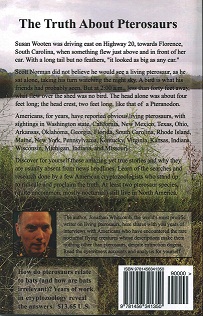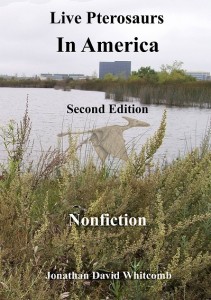Marfa Lights in Texas
As of late-2010, only a few of the scientists who had investigated Marfa Lights, the strange ghost lights of Marfa, Texas, had been informed of the living-pterosaur explanation. (Not all lights around Marfa are truly uncommon, however, since the atmospheric conditions sometimes make distant car headlights appear strange.) The cryptozoological possibility seems weird, but there are similarities with the ropen lights of Papua New Guinea, and there the lights are said to be nocturnal flying creatures described like giant Rhamphorhynchoid pterosaurs: long-tailed ropens.
Sightings of Marfa Lights in Texas
. . . there is a separate and unique light phenomenon in the area of the Chianati mountain range that I can not explain. Balls of light sitting in a chico bush . . . One I really enjoyed watching moved straight up a cliff face and then rested on top of the mountain changing from bright yellow to a dim red . . .
The flying (and sometimes dancing) lights of Marfa, Texas, only show themselves a few times a year, in contrast to the counterfeit “strange” lights caused by headlights of cars on a nearby highway. But if those lights are caused by the same general kind of creature as the ropen of Papua New Guinea (large or giant featherless flying creature with a long tail) . . .
Addendum
Late in November, 2010, was published the second edition of the cryptozoology book Live Pterosaurs in America, with one chapter devoted to the mystery of the Marfa Lights and the interpretation of ropen-like bioluminescent flying predators. This extraordinary possibility of living pterosaurs in southwest Texas makes serious scientific investigations worth the effort, even if the bioluminescent predator is eventually found to be only a bird or a bat.
Early in December, 2010, a press release about the Marfa Lights, “Unmasking a Flying Predator in Texas,” spread across the United States, mostly through online news sites. For some readers, this was their first exposure to the possibility of bioluminescent pterosaurs (AKA “pterodactyls”) flying over southwest Texas at night. That press release deals with the specifics of a particular kind of mystery-light sighting: splittings and re-mergings of flying lights, and the potential for bioluminescence in huning bats that catch insects.
When residents of Marfa, Texas, and those in surrounding areas . . . have observed the more mysterious flying lights—many observations over the decades—they recognize an intelligence in the “dances.” A light sometimes will split into two lights and the two will slowly separate for quite a distance, eventually turning back as they approach each other, like in a square dance . . .
__________________________________________________________________________
 From Chapter Six of the second edition of the cryptozoology book Live Pterosaurs in America:
From Chapter Six of the second edition of the cryptozoology book Live Pterosaurs in America:
“Mr. Bunnell the scientist, has lived around Marfa, Texas, for much of his life. In his youth, he had assumed that somebody had already done the research and had explained what caused Marfa Lights, for people had seen them for countless years; how surprising when he found that nobody had come up with a convincing explanation! (James Bunnell, apparently, knew nothing about ropens in New Guinea; he considered only Marfa Lights interpretations involving light-sources non-living. I communicated with him by emails, early in 2010.)”
Read about this amazing new cryptozoological interpretation of the Marfa Lights of Texas.
__________________________________________________________________________
 Second edition of Live Pterosaurs in America, nonfiction cryptozoology book by Jonathan David Whitcomb
Second edition of Live Pterosaurs in America, nonfiction cryptozoology book by Jonathan David Whitcomb
Published by Createspace, November 20, 2010
146 pages, with an extensive index for researchers
ISBN-13: 9781456341350
“Scott Norman did not believe he would see a living pterosaur, as he sat alone, taking his turn watching the night sky. A bird is what his friends had probably seen. But at 2:00 a.m., less than forty feet away, what flew over the shed was no bird. The head alone was about four feet long; the head crest, two feet long, like that of a Pteranodon.”